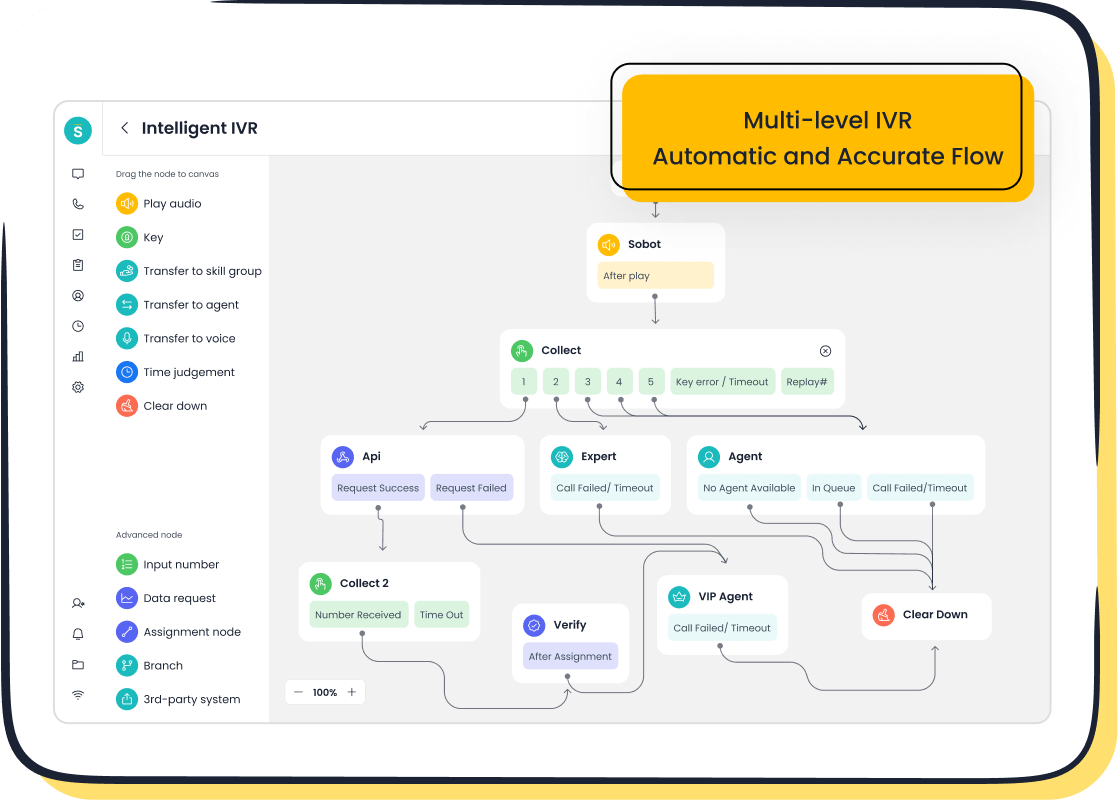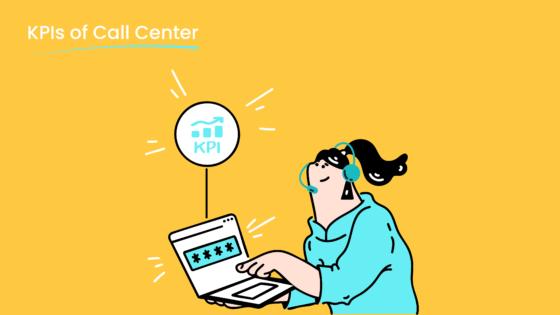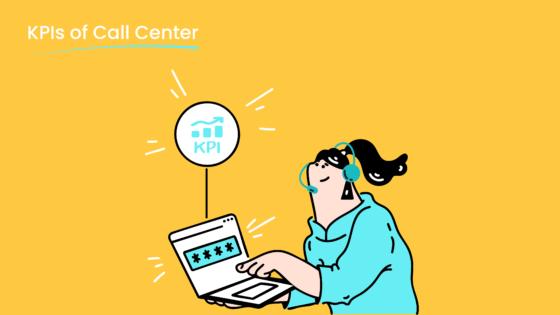The Hidden Costs of High Call Transfer Rate on CX


High Call Transfer Rate (CTR) disrupts customer experience and creates frustrating customer experiences. When 19% of customers face transfers during calls, satisfaction drops by 12%. Transfers also reduce First Call Resolution rates by 14%, leaving issues unresolved. These inefficiencies frustrate customers and strain your team. Long wait times and repeated explanations damage customer engagement and loyalty. Addressing high CTR is essential for a strong customer experience strategy. Tools like Sobot’s intelligent call routing can help you reduce transfers, improve customer satisfaction, and streamline operations.
Understanding Call Transfer Rate (CTR)
What is Call Transfer Rate?
Definition and calculation of CTR in call centers
Call Transfer Rate (CTR) measures how often calls are transferred from one agent to another before resolution. It reflects the efficiency of your call center's routing system. To calculate CTR, use this formula:
(Number of Calls Transferred to Another Employee / Total Number of Calls Handled) * 100
For example, if your team handles 2,000 calls and transfers 150, the CTR is (150 / 2000) * 100 = 7.5%. A high CTR often signals poor call routing or insufficient agent training, which can negatively impact customer satisfaction and operational efficiency.
Common benchmarks for acceptable CTR levels
CTR benchmarks vary by industry but typically range from 5% to 15%. A lower CTR indicates effective call routing and better first-call resolution rates. High CTRs, however, can lead to longer wait times and repeated explanations, frustrating customers. For instance, research shows that 19% of customers experience call transfers, which reduces satisfaction by 12% and lowers first-call resolution rates by 14%. Keeping CTR within acceptable limits ensures smoother customer interactions and boosts trust in your service.
Why Call Transfers Happen
Common reasons for call transfers in customer service
Call transfers occur for several reasons:
- Agents lack the expertise to resolve specific issues.
- Customers reach the wrong department due to unclear IVR menus.
- Complex queries require escalation to senior staff.
- Miscommunication during the initial interaction.
These scenarios highlight the importance of proper training and intelligent call routing systems like Sobot's Voice/Call Center. Features like smart call routing and AI-powered voicebots can direct customers to the right agent, reducing unnecessary transfers.
Differentiating between necessary and excessive transfers
Not all call transfers are bad. Necessary transfers occur when specialized knowledge is required, ensuring the customer receives accurate assistance. Excessive transfers, however, result from poor routing or untrained agents. These transfers waste time, increase handling costs, and frustrate customers. A high CTR often indicates excessive transfers, which can erode customer satisfaction and trust. Tools like Sobot's intelligent IVR can help minimize these issues by routing calls efficiently.
The Hidden Costs of High Call Transfer Rate

Impact on Customer Satisfaction
Frustration from repeated explanations and delays
High call transfer rates frustrate customers when they must repeat their issues to multiple agents. This repetition wastes time and creates a negative customer experience. Research shows that 19% of customers experience call transfers, leading to a 12% drop in customer satisfaction. Long wait times during transfers further aggravate the situation, especially for urgent issues. For example, a customer seeking immediate assistance with a billing error may lose trust in your service if their call is transferred multiple times without resolution. Efficient call routing systems, like Sobot’s Voice/Call Center, can minimize these delays by directing calls to the right agent from the start.
Increased likelihood of customer churn
When customers face repeated call transfers, their loyalty to your brand diminishes. Studies reveal that high CTR reduces First Call Resolution rates by 14%, leaving issues unresolved and increasing the likelihood of churn. Dissatisfied customers often switch to competitors, impacting your revenue and reputation. By addressing high CTR, you can enhance customer satisfaction and retain more customers.
Operational Challenges
Higher average handling time (AHT) and resource usage
Frequent call transfers increase the average handling time (AHT) for each interaction. Agents spend more time understanding the customer’s issue, which reduces overall efficiency. According to research, high CTR correlates with a 12% drop in customer satisfaction and a 14% decrease in First Call Resolution rates. These inefficiencies strain your resources and escalate operational costs. Implementing tools like Sobot’s intelligent IVR can streamline call handling and reduce AHT.
Increased workload and stress for agents
Excessive call transfers burden your agents, leading to higher stress levels and burnout. Agents must repeatedly address frustrated customers, which affects their morale and productivity. A unified workspace, such as Sobot’s Voice/Call Center, equips agents with the tools and information they need to resolve issues efficiently, reducing stress and improving performance.
Long-Term Brand Impacts
Negative word-of-mouth and online reviews
Customers who experience poor service due to high call transfer rates often share their dissatisfaction publicly. Negative reviews and word-of-mouth can deter potential customers and harm your brand’s reputation. For instance, a single bad review about unresolved issues can influence hundreds of potential buyers. Reducing call transfers can help you maintain a positive brand image and attract more customers.
Erosion of trust and loyalty in the brand
High call transfer rates erode trust and loyalty. Customers expect their issues to be resolved promptly without being transferred multiple times. When this expectation isn’t met, they lose confidence in your brand. Research highlights that warm transfers, where agents provide context before transferring a call, improve customer satisfaction and foster loyalty. By optimizing your call routing system, you can build stronger relationships with your customers and enhance their overall experience.
Data-Driven Insights on High CTR
Key Statistics and Trends
12% decrease in customer satisfaction due to high CTR
High call transfer rates directly impact customer satisfaction. Studies reveal that when customers experience call transfers, satisfaction drops by 12%. This decline stems from the frustration of repeating issues to multiple agents and enduring longer wait times. For instance, a customer seeking urgent assistance may lose trust in your service if their call is transferred unnecessarily. These inefficiencies not only harm the customer experience but also hinder key call center KPIs like First Call Resolution (FCR). Tools like Sobot’s Voice/Call Center can address these challenges by routing calls intelligently, ensuring customers connect with the right agent on the first attempt.
Correlation between high CTR and lower first call resolution rates
High call transfer rates negatively affect FCR, a critical call center KPI. When calls are transferred multiple times, agents spend more time understanding the issue rather than resolving it. This inefficiency reduces FCR rates by 14%, leaving customers dissatisfied and increasing operational costs. By leveraging solutions like Sobot’s AI-powered voicebots and smart call routing, you can streamline call handling and improve FCR. These tools ensure that customers receive accurate assistance without unnecessary transfers, enhancing both efficiency and satisfaction.
Industry-Specific Insights
Sectors most affected by high CTR challenges
Certain industries face greater challenges with high call transfer rates. Retail and financial services often deal with complex customer inquiries that require specialized knowledge. For example, a retail customer may need assistance with product returns, while a financial services client might seek help with account discrepancies. In both cases, poor call routing can lead to excessive transfers, frustrating customers and straining resources. Addressing these issues is crucial for maintaining strong customer relationships and achieving key call center KPIs.
Examples of successful CTR reduction in industries like retail and financial services
Retail and financial services have successfully reduced call transfer rates by adopting advanced technologies. For instance, OPPO, a leading retail brand, partnered with Sobot to implement AI-driven call routing and optimize its knowledge base. This approach reduced unnecessary transfers and improved customer satisfaction. Similarly, financial institutions using Sobot’s Voice/Call Center have streamlined their operations by integrating intelligent IVR systems. These solutions not only enhance the customer experience but also improve operational efficiency, setting a benchmark for other industries.
Strategies to Reduce Call Transfer Rate
Optimizing Call Routing with Sobot Voice/Call Center
Leveraging intelligent IVR and smart call routing
Intelligent IVR (Interactive Voice Response) systems and smart call routing can significantly reduce call transfers. These tools ensure that customers connect with the right agent on their first attempt. Sobot Voice/Call Center offers features like drag-and-drop IVR menus and rule-based routing. These capabilities allow you to customize call flows and direct customers to the appropriate department or agent. For example, a customer with a billing issue can be routed directly to the billing team, avoiding unnecessary transfers.
The efficiency of Sobot’s call routing is supported by measurable results. Businesses using Sobot Voice/Call Center have reduced transfer rates by 90% and achieved a 395% ROI. These improvements not only enhance customer experience but also streamline operations, saving time and resources.
Using data analytics to predict and direct customer needs
Data analytics plays a crucial role in predicting customer needs and directing calls effectively. By analyzing historical call data, Sobot Voice/Call Center identifies patterns and common issues. This insight helps you anticipate customer inquiries and route calls to agents with the right expertise. For instance, during a product launch, the system can prioritize routing calls about the new product to trained agents. This proactive approach minimizes call transfer rate (CTR) and improves first-call resolution rates.
Enhancing Agent Training
Cross-training agents for broader expertise
Cross-training equips your agents with the skills to handle a variety of customer issues. When agents possess broader expertise, they can resolve more inquiries without transferring calls. For example, an agent trained in both technical support and billing can assist customers with overlapping concerns. This reduces the need for transfers and enhances customer satisfaction. Sobot’s unified workspace supports cross-training by providing agents with access to comprehensive customer information, enabling them to address diverse issues efficiently.
Empowering agents to resolve issues independently
Empowering agents to make decisions independently reduces the dependency on escalations. When agents have the authority to resolve issues, they can address customer concerns more effectively. Sobot Voice/Call Center enhances this capability by offering real-time access to customer data and call history. This information allows agents to provide accurate solutions without seeking additional approvals. Empowered agents not only improve operational efficiency but also create a more positive customer experience.
Leveraging AI-Powered Tools
Using AI-driven chatbots and virtual assistants for first-level support
AI-driven chatbots and virtual assistants handle routine inquiries, reducing the volume of calls that require agent intervention. These tools engage customers in multi-turn conversations, allowing them to express their needs freely. This interaction often resolves issues at the first level, minimizing the need for call transfers. For example, a chatbot can assist with password resets or order tracking, freeing agents to focus on complex queries. Sobot’s AI-powered voicebots enhance this process by recognizing customer intent and providing accurate responses.
Identifying transfer patterns with AI analytics
AI analytics identifies patterns in call transfers, helping you address underlying issues. For instance, if a high number of transfers occur due to unclear IVR menus, the system flags this problem. You can then optimize the IVR design to reduce confusion. Sobot’s AI tools provide actionable insights, enabling you to refine your processes and lower CTR. By addressing these patterns, you improve both efficiency and customer satisfaction.
Monitoring and Improving with Sobot's Unified Workspace
Real-time monitoring and analysis of call data

Real-time monitoring helps you identify inefficiencies in your call center operations. By analyzing live call data, you can detect patterns like frequent call transfers or extended handling times. These insights allow you to address issues immediately, improving customer satisfaction and operational efficiency. For example, if you notice a spike in call transfers during a specific time, you can investigate the root cause and adjust your call routing strategy.
Sobot's Unified Workspace offers advanced monitoring tools that provide real-time dashboards and analytics. These features let you track key metrics such as average handling time, first-call resolution rates, and agent performance. With this data, you can make informed decisions to optimize your processes. For instance, you can identify agents who need additional training or adjust staffing levels during peak hours. This proactive approach ensures smoother operations and better customer experiences.
Seamless integration with existing systems for better efficiency
Integrating your call center with existing systems enhances efficiency and reduces operational silos. Sobot's Unified Workspace seamlessly connects with your CRM, ticketing systems, and other business tools. This integration ensures that agents have access to all relevant customer information in one place. When agents can view call history, previous interactions, and customer preferences, they resolve issues faster and more effectively.
For example, a retail business using Sobot's Unified Workspace can integrate its order management system. This allows agents to quickly check order statuses or process returns without switching between platforms. Such streamlined workflows reduce the need for call transfers and improve first-call resolution rates. By unifying your systems, you not only save time but also enhance the overall customer experience.
Real-World Examples of Successful CTR Reduction

Case Study: OPPO's Collaboration with Sobot
Problem: High CTR during peak shopping periods
OPPO, a global leader in smart devices, faced a surge in transferred calls during peak shopping seasons. Customers often encountered delays and repeated explanations due to inefficient call routing. This issue not only increased operational costs but also led to customer dissatisfaction. The high volume of inquiries overwhelmed agents, making it difficult to maintain service quality.
Solution: Implemented AI-driven call routing and optimized knowledge base

To address these challenges, OPPO partnered with Sobot to implement AI-driven call routing. This solution ensured that calls reached the right agent on the first attempt, significantly reducing unnecessary transfers. Additionally, Sobot helped OPPO optimize its knowledge base using AI, automating 90% of manual maintenance tasks. These improvements enhanced service efficiency and reduced transferred calls. As a result, OPPO achieved an 83% chatbot resolution rate and a 57% increase in repurchase rates. The collaboration also streamlined operations, allowing agents to focus on complex issues.
Case Study: Sobot's Impact on Financial Services
Problem: Inefficient call routing and agent workload
A leading financial services provider struggled with inefficient call routing, which led to a high number of transferred calls. Agents often lacked the necessary information to resolve issues promptly, increasing handling times and customer frustration. This inefficiency also contributed to agent burnout and reduced overall productivity.
Solution: Deployed Sobot Voice/Call Center for smart call routing and agent support
The financial institution adopted Sobot’s Voice/Call Center to optimize its call routing processes. The platform’s intelligent IVR and AI-powered voicebots directed calls to the most suitable agents, minimizing unnecessary transfers. Real-time data analytics provided insights into call patterns, enabling the company to refine its workflows. This approach reduced transferred calls by 50% and improved first-call resolution rates. The streamlined system also alleviated agent workload, enhancing both efficiency and customer satisfaction.
📊 Industry Insights: Telefónica’s OpenQuestion solution achieved similar results by enhancing IVR resolution rates and reducing call transfers. Other companies, like a global healthcare tech firm, reported a 90% reduction in misrouted calls and an 8% decrease in contact center workload.
| Company | Key Achievements | Call Transfer Rate Reduction | Other Metrics |
|---|---|---|---|
| Swisscom | - Natural conversation beyond Q&As - Efficient self-service resolution | N/A | Improved customer satisfaction |
| Global Top 3 Technology | - 55% of callers referred to web resources - Reduced misrouted calls from 60% to 30% | 50% | Decreased Average Handle Time by 2 min |
| Global Healthcare Tech Company | - 90% reduction in call misrouting - 8% decrease in contact center workload | 90% | Full integration within 90 days |
These examples highlight how advanced solutions like Sobot’s Voice/Call Center can transform customer service operations, reducing transferred calls and improving overall efficiency.
High call transfer rates silently harm your business. They frustrate customers, increase operational costs, and weaken brand loyalty. Addressing this issue improves customer experience and strengthens your competitive edge. Tools like Sobot’s Voice/Call Center offer intelligent call routing and real-time analytics to reduce unnecessary transfers. These solutions help you streamline operations and boost customer satisfaction. By prioritizing efficient call handling, you can build trust and loyalty while driving long-term success.
FAQ
What is an acceptable Call Transfer Rate (CTR) for a call center?
An acceptable CTR typically ranges from 5% to 15%, depending on the industry. Lower rates indicate efficient call routing and higher customer satisfaction. For example, using tools like Sobot Voice/Call Center can help you achieve a CTR below 10%, improving operational efficiency and first-call resolution rates.
How does high CTR affect customer satisfaction?
High CTR frustrates customers by forcing them to repeat their issues. Studies show that 19% of customers experience call transfers, leading to a 12% drop in satisfaction. Sobot’s intelligent call routing minimizes unnecessary transfers, ensuring customers connect with the right agent on the first attempt.
Can AI tools help reduce Call Transfer Rates?
Yes, AI tools like Sobot’s Voice/Call Center use smart call routing and voicebots to direct calls efficiently. These tools analyze customer needs in real time, reducing unnecessary transfers. For instance, AI-driven systems can resolve routine inquiries, allowing agents to focus on complex issues.
How does Sobot Voice/Call Center improve operational efficiency?
Sobot Voice/Call Center enhances efficiency with features like intelligent IVR, real-time analytics, and a unified workspace. These tools streamline call handling, reduce average handling time, and improve first-call resolution rates. Businesses using Sobot report up to a 90% reduction in unnecessary transfers.
Why is first-call resolution important for reducing CTR?
First-call resolution ensures customer issues are resolved during the initial interaction, reducing the need for transfers. High CTR often correlates with lower first-call resolution rates. Sobot’s AI-powered tools improve resolution rates by equipping agents with the right information and routing calls effectively.
See Also
Enhancing Call Center Efficiency Through Effective Monitoring Techniques
A Comprehensive Guide to Live Chat Outsourcing Expenses
Essential Strategies for Effective Call Center Quality Management
